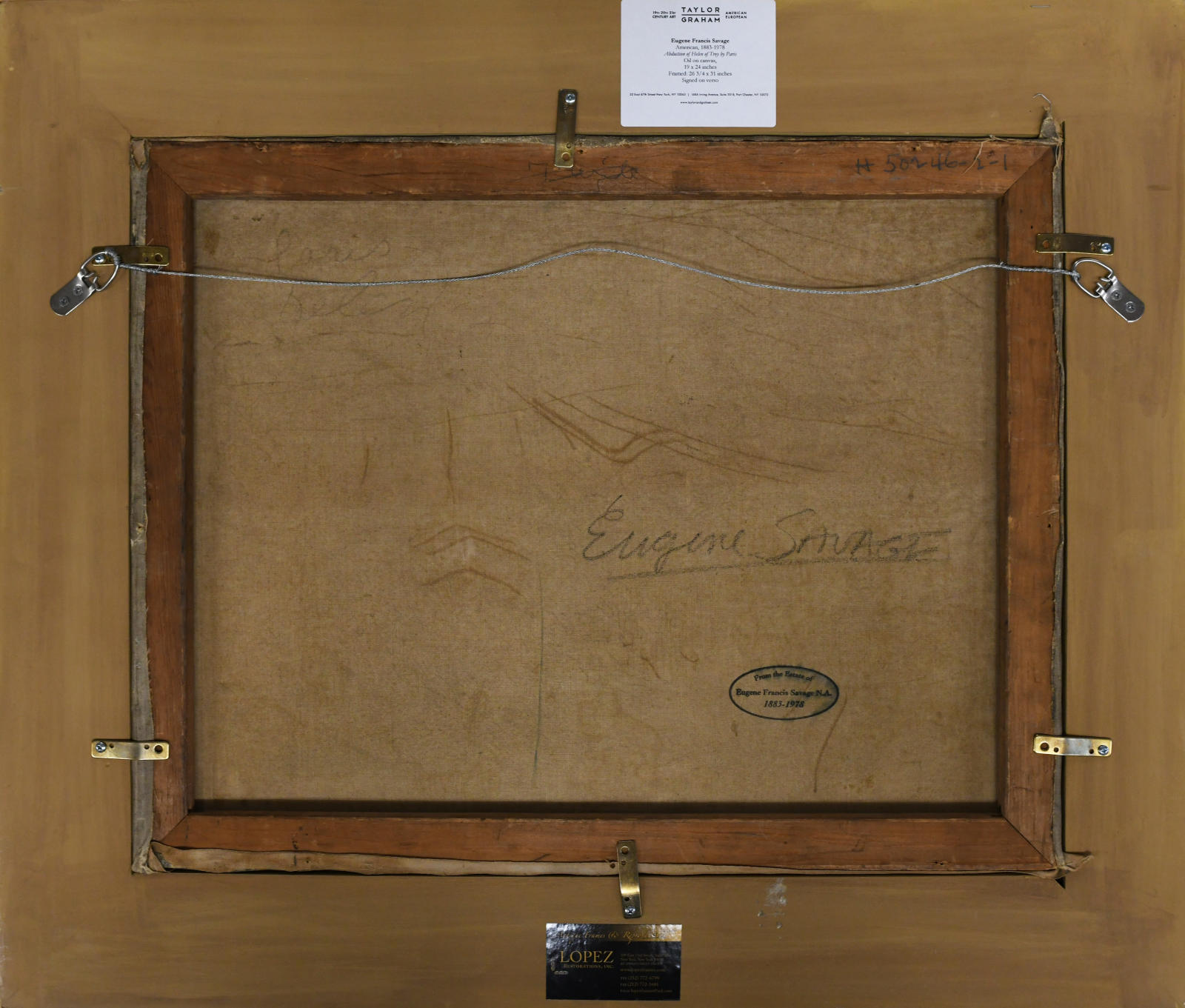



Framed: 26 3/4 x 31 inches
artist
A contemporary of such giants of mural painting as the Mexican artist David Alfaro Siqueiros (1896-1974), Jose Clemente Orozco (1883-1949), and Diego Rivera (1886-1957) as well as the American muralist icon Thomas Hart Benton (1889-1975), Savage developed his own unique style of mural painting that melded classical form with a contemporary Art Deco style of painting.
Eugene Francis Savage was still very much a late proponent of allegorical academic figure painting, a tradition which he continued while he was a Professor at Yale well into the middle of the twentieth century. Savage had previously been awarded the Prix de Rome Prize from the Art Institute of Chicago. During his fellowship at the American Academy in Rome from 1912-1915 he had ample opportunity to study the Roman and Greek sculptures that dot this ancient city. Savage learned to model his figures in a classical academic style, creating drawings of the human form and studying traditional mural techniques. Such intimate first hand knowledge of classical sculpture coupled with the education he received from the great color theorist Hermann Groeber (1865-1935) in Munich in 1913 as well as his presumed exposure to Expressionist Art that was emerging in that German city at the time directly influenced the direction of Savage’s art. A devoted advocate of academic painting Savage incorporated these classical elements and allegorical subject matter within a thoroughly modern color palette of rich luxurious jewel like tones. The resulting creation is a highly sophisticated work that melds the old seamlessly with the new in a format that represents unique Savage’s painting style.



